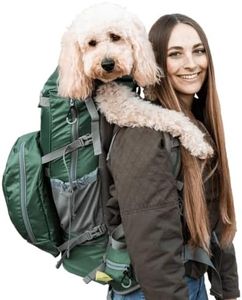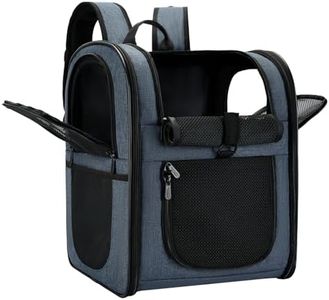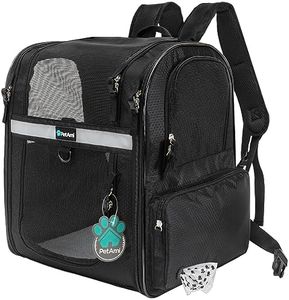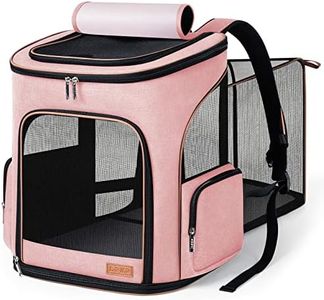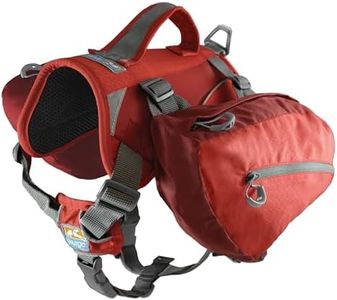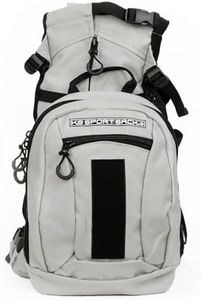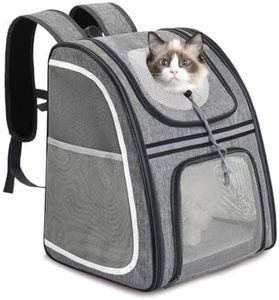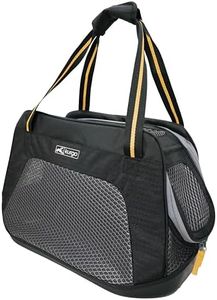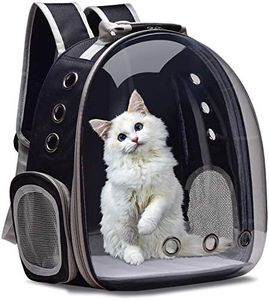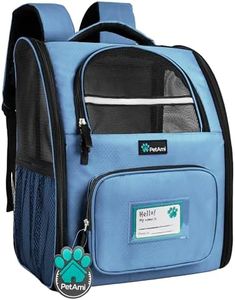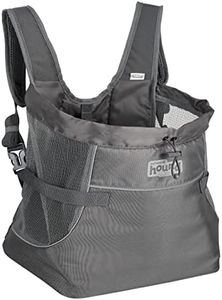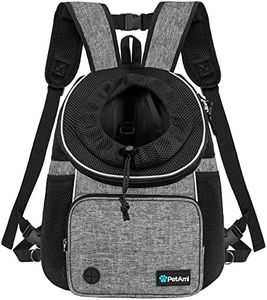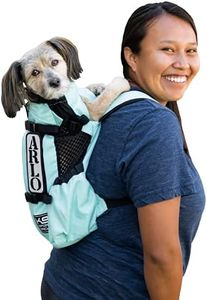We Use CookiesWe use cookies to enhance the security, performance,
functionality and for analytical and promotional activities. By continuing to browse this site you
are agreeing to our privacy policy
10 Best Dog Backpack Carriers
From leading brands and best sellers available on the web.Buying Guide for the Best Dog Backpack Carriers
Choosing the right dog backpack carrier is all about comfort, safety, and convenience for both you and your furry friend. Start by considering your dog's size, weight, and temperament, as these factors will guide many of your decisions. Think about how and where you'll use the carrier—will it be for hiking, traveling, or everyday errands? Always prioritize your dog's well-being and comfort, and remember to check that your carrier is safe, well-ventilated, and easy for you to use.Size and Weight CapacitySize and weight capacity refer to how much weight the backpack can safely hold and the space it offers for your dog. This is crucial to ensure your dog fits comfortably and securely inside. Carriers generally come in ranges such as small (for tiny breeds or puppies), medium (for most small to medium dogs), and large (for bigger breeds). Measure your dog's weight and length, and compare it to the carrier specifications. Choosing a carrier slightly larger than your dog's dimensions helps with comfort but avoid going too big as it can be less secure. Always make sure your dog won't feel cramped or restricted, but also won't slide around.
Ventilation and AirflowVentilation refers to how well air circulates in the backpack. Good ventilation is important so your dog stays cool, especially during hot weather or long trips. Ventilation is usually provided by mesh panels, windows, or holes. Some carriers offer minimal ventilation to protect against weather, while others use all-mesh designs for maximum airflow. For short trips or cooler weather, minimal ventilation might be fine, but for longer outings or warmer climates, more airflow is always better to prevent overheating and distress.
Comfort and PaddingComfort and padding are about both your dog's and your own comfort during use. Soft liners, padded interiors, and cushioned straps all contribute. Inside the carrier, look for padded floors and back supports so your dog is sitting on something soft. For you, padded shoulder straps and back panels make the backpack easier to carry, especially for longer periods. For short outings, minimal padding may suffice, but for hikes or longer wear, prioritize extra padding for both wearer and pet.
Securing MechanismsSecuring mechanisms are how your dog is kept safe in the backpack, whether by zippers, buckles, leash attachments, or locking windows. These features prevent your dog from jumping or falling out. Some bags have simple zipper closures, while others offer additional inner leash tethers or safety clips for extra security. If your dog is calm and used to carriers, basic zippers may work, but for escape artists or nervous pups, look for carriers with multiple closure options and sturdy attachments.
Entry and Exit PointsEntry and exit points are the openings through which your dog gets in and out of the carrier. Backpacks may have top, front, or side entry options with flaps or zippered openings. Multiple entry points make it easier to coax a reluctant dog inside, and can provide quick access for calm or excitable pets. If your dog is confident and cooperative, a single entry might be fine, but for anxious or wriggly dogs, look for multiple, wide openings.
Adjustability and FitAdjustability refers to how well the backpack can be customized to fit you and, in some aspects, your dog. This includes adjustable shoulder straps, chest straps, and hip belts for even weight distribution and comfort during use. Carriers with more adjustability allow for a closer, more secure fit, which is especially helpful during active activities. If you plan to carry your dog for extended periods or share the carrier between users, opt for models with multiple customizable straps and settings.
Durability and MaterialDurability refers to the quality and strength of the materials used. Common choices include nylon, polyester, and canvas. Sturdier materials withstand scratching and chewing, as well as frequent outdoor use. Lightweight fabrics work for occasional use, while thick or reinforced textiles are better for long hikes or heavy dogs. If your dog tends to chew or you’re hiking on rough terrain, pick thicker, more durable fabrics. For casual indoor use or lighter pets, lighter materials are fine.
